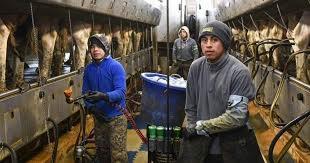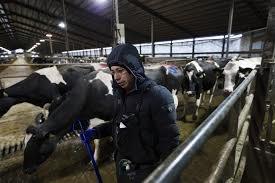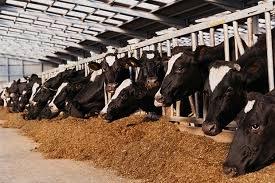Press reports and a ProMED posting on April 1st confirmed isolation of H5N1 virus, presumably by applying PCR from a farm worker in contact with a dairy herd infected with the virus.

At the outset, it is emphasized that the condition now diagnosed in dairy herds in New Mexico, Texas, Idaho, Michigan and Kansas should be termed “Bovine Influenza- H5N1”.
According to reports, the affected individual showed conjunctivitis suggesting infection by virus entrained on dust consistent with the environment of herds held in barns. Previously avian influenza H5N1 virus was demonstrated in a single case in the U.S., apparently three individuals in Spain in 2022 working with infected mink and two cases of individuals exposed to dead migratory birds in South America last year.
The previous case of H5N1 infection in the U.S. occurred in a worker involved in depopulation of an infected flock in Colorado. The patient was asymptomatic and there was no evidence of human-to-human transmission to contacts. It must be remembered that during the 2015 followed by the 2022-2023 epornitics, thousands of worker-hours were spent in depopulating farms with only one asymptomatic case, despite surveillance. This report may have been simply isolation of inhaled viral RNA from nasal passages obtained on routine sampling of workers. Some cases of H5N1 have demonstrated mild upper respiratory symptoms as in the case of an elderly man in the U.K. that harbored live infected ducks in his home.
A news item posted in the March 29th edition of EGG-NEWS discussed the outbreak of bovine influenza-H5N1. Until information is provided concerning the molecular biology of the isolates from herds in diverse states including any possible mutations, it will be difficult to relate the apparent susceptibility of ruminants to an avian virus or to establish zoonotic risk.
According to claims, milk from affected cows is destroyed and has not entered the fluid milk channel. In any event, pasteurization will destroy any influenza virus passed into milk produced by affected cows. It is not clear whether all milk from an infected herd is withheld from market or only product from a clinically affected animal showing reduced milk volume and organoleptic changes. There is an obvious question as to whether infected but clinically unaffected viremic cows in the herd are passing virus to milk. To date, there has been no data on either morbidity or prevalence of viremia within an affected herd, although it can be assumed that direct animal-to-animal transmission has occurred.

Hopefully, APHIS is gathering data and conducting studies to identify the source and routes of introduction of infection into herds. Preliminary evidence suggests that movement of cattle has resulted in inter-herd infection.
The Centers for Disease Control and Prevention is cooperating with state and federal agencies to monitor and investigate possible human exposure.
The somewhat alarming incidence rate of bovine influenza H5N1 corresponded to the apparent cessation of outbreaks in commercial poultry in preceding weeks, although APHIS has diagnosed cases in backyard flocks and yesterday in one egg-production complex in Farwell, TX. on the border with New Mexico. A second occurred in a western Michigan farm holding 1.9 million hens. The non-commercial cases have occurred in numerous states since the onset of the infection in dairy herds, approximately one month ago.

The moderator of the ProMED posting on March 29th, requested details of personal protective equipment worn on farms and by workers at slaughter plants to which culled dairy animals have been consigned. The moderator also commented on the need for serologic surveys in addition to viral isolation and characterization.
Poultry health professionals, farmers and consumer groups await regular and informed releases by USDA and CDC concerning the livestock and human components of bovine influenza- H5N1.